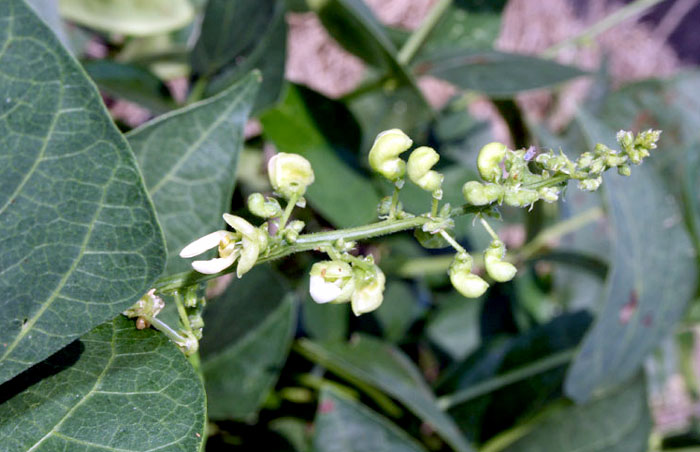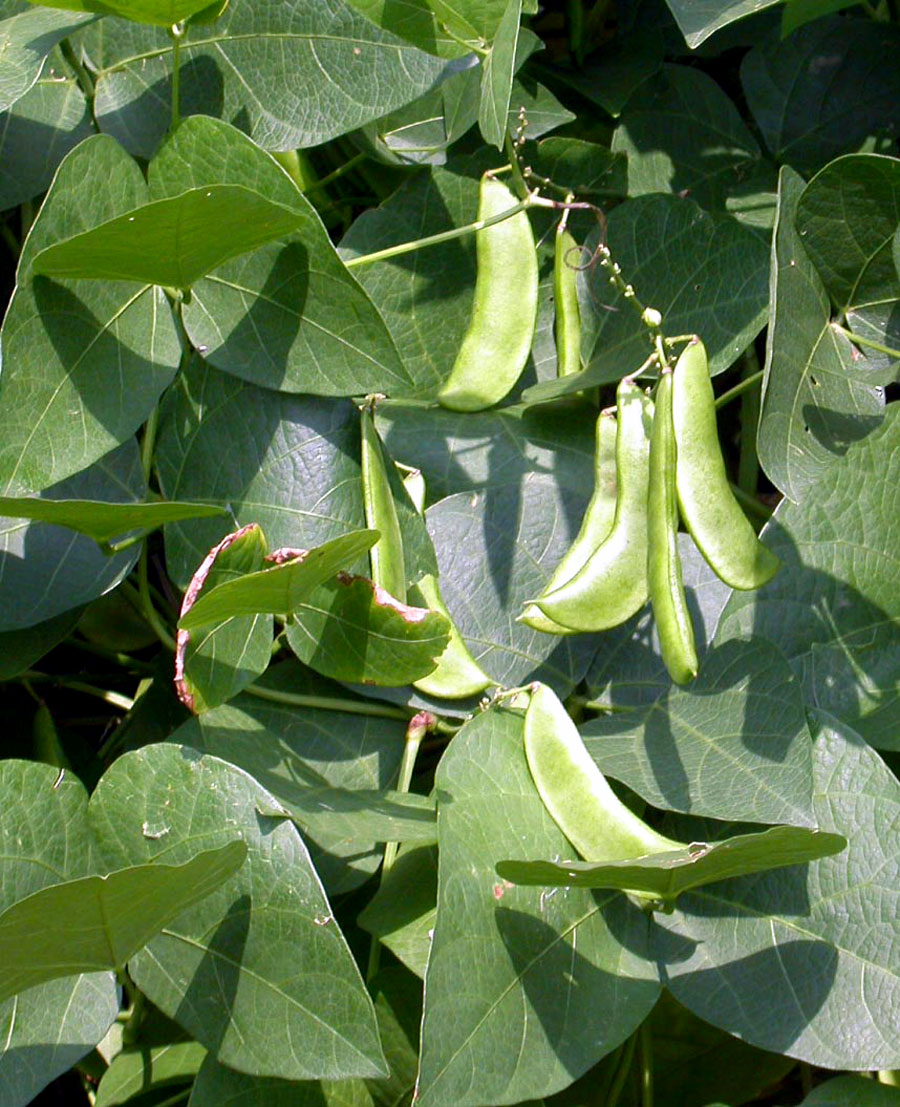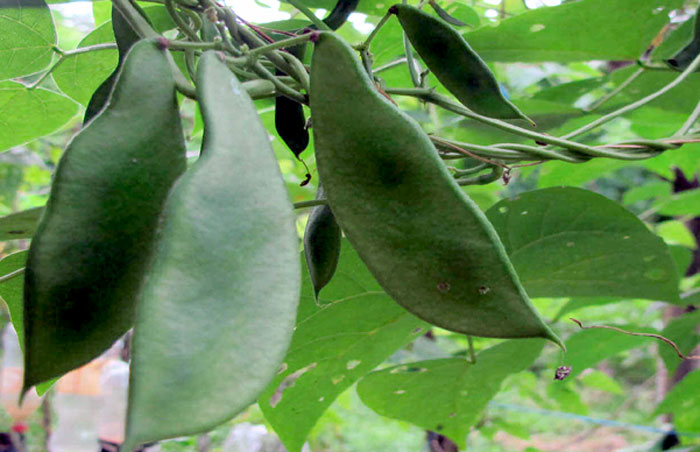Growing lima beans (phaseolus lunatus)
Growing Lima beans, These are perennials and grow in the annual crop. Lima beans are known by many names such as butter beans and chad beans. They grow like green beans and take more time to mature. Learn Growing lima beans, how to grow lima beans, lima bean plant (Butter Beans) overview, Lima beans care, and more in this article.
Butter Beans are being planted in Peru for over 600 years in namesake Lima, Peru. This tender is annual and after the last cold of Spring, you can grow it in your garden, when the temperature of the soil is warmer than at least 5 days to 65 degrees. You can start indoors 2 to 3 weeks before the last cold of spring. About 90 days cold free hot days are required for Lima beans to mature. Many proteins, minerals, and many vitamins are found in all the seeds of beans, mostly used as fresh vegetables and frozen, and some people are using it by drying. Nature Bring is sharing a simple way of growing and care of Lima Beans.
Overview Lima beans
Lima bean plant is an annual tender which requires any support, its seeds contain oval shapes. There are two types of beans, bush and pole or vine variety. In which the height of the bush is about 2 feet high, and the seeds are small, which grows faster than the Lima beans. The seeds of Lima beans grow in length and are about 10 to 12 feet. The main varieties of Lima beans, including butter beans, sieva beans, Burma beans, and Baby Lima are more popular. Lima beans are used by drying people too. Lima bean plant pods are 3 to 4 inches long, which are pale green colors. Some varieties are 5 to 8 inches long, depending on the variety. Its leaves are three leaflets and flowers are white. It takes 60 to 85 days after planting to mature.
Classification butter beans
Scientific name phaseolus lunatus
Common name Lima beans, butter beans
Sun Require Full/ part Sun
Flower colors white
Soil Loamy/sandy soil
Soil pH 6-6.8
Zone 5-9

Growing lima beans
Growing Lima beans is very easy at home, but they are very sensitive to cold so that you must know their growing condition.
Location and soil
Lima bean plant prefer the presence of the full sun, so choose a place for more production where direct sunlight comes. Warm temperatures and full-day length are mandatory. With the presence of the full sun, it gets rid of fungal diseases.
Butter beans are very sensitive to cold, for this you should test your soil and keep soil pH 6 to 6.8, it is good for the natural soil. This plant does not require very rich and high fertilizer soil. Well-drained and slight prosperity soil for this is good. These beans can have problems due to heavy soil because their roots are deep and spacious and do not like wet soils. Read more.
Temperature
Lima beans do not like extremes of temperature. They are growing well in the temperature around 70 ° F. These plants perform better in warmer temperatures than cold temperatures.
Planting butter beans
- The size of the seed of Lima beans is large and you can sow it directly in the garden or backyard. For this, make ordinary 1 to 2 inches deep and cover the seeds with soil and then put a little water. For bush variety beans space about 4-6 inches apart, you can sow its seeds thinly in a wide row if needed.
- If you have a short season then you can start the seeds of Butter Beans inside the house. You can start it from 3 to 4 weeks before the last cold. If you want to start outdoor, cover the black plastic sheet to keep the soil warm.
- When germination is 4 to 6 inches tall, then it should be transplanted.
Lima beans care
Watering
During the time the beans blooming, and the pods are beginning, during this time you fill water at a rate of the 1-inch week if water rains at this time then it does not make any difference. If the water is low during blooming and pods, then its flowers will blossom before time and pods will not be produced.
Feeding
Before planting beans, add organic fertilizers to the soil, for this, you can follow the instructions written on the packets. Use supplemental fertilizers from time to time. Apply the compost when the beans are about 6 inches long. Keep the natural fertilizer slightly away on either side of the plant, because sometimes the plant gets burned when it comes in direct contact. Use Mulch topsoil to maintain moisture. How to make organic compost.
The lima bean plant requires 12-12-12 fertilizers in the second and fifth weeks of the growing period so that it can get additional phosphorus and potassium.
Hardiness
Bean plants are not hardy These are very sensitive to cold. To avoid danger, do not planting during extreme cold. Cover the crop in the fall at night, when the temperature is below 40 degrees F.
Harvesting Lima beans
There is considerable fluctuation in the length of the season required to grow Lima beans. It takes 60 days to produce bush varieties like Fordhook. Heat-loving beans Christmas lima takes about 90 days to mature. If you live in a short season area, then start the seed inside the house. When the pod of the plant gets plump up, do not pull it to harvest, for this, hold the vine with one hand and harvest the fruit with the other hand.
Pests and diseases butter beans
- Bean beetles and aphids, flea beetles, leafhoppers, and mites are attacked Lima bean, they harm the plant. Always keep observing and tackle this problem in the beginning.
- Many four-legged animals also cause significant damage to those who love beans. Groundhogs defoliate it in a few minutes.
- Butter Bean’s biggest disease problem is root rot. Well-drained soil is necessary to avoid this problem. Do not use automatic irrigation in the rainy season.
Main varieties of Lima beans
Nature Bring sharing about some of the major types of lima bean. Some of these varieties perform better in warmer and longer seasons, and there are some that are better for temperate areas.
Christmas lima:
It is a big burgundy and white beans, which mature in about 88 days.
Butter beans:
It is also called Jackson Wonder Butter Beans. It is a colorful bean and takes approximately 66 days to harvest.
Apart from this, King of the Garden takes 90 days, Illinois Giant 86 Days and the Proteekar take about 90 days in Harvest.
Bush Lima beans:
Bush beans take approximately 75 days and Potato Lima takes about 75 days to mature.
Small-seeded beans (Bush):
Baby Bush takes approximately 65 days and Henderson Bush is about 67 days old.
See details about green beans.
Read also: 10 garden grass which makes your garden attractive. 8 perennial vegetables you can grow ones and savor forever. How to grow princess flowers. Growing papaya tree in containers. How to grow Nigella damascena. Aster growing and care tips. Growing chickpeas and harvest. Organic Bottle gourd growing guide. princess flowers growing guide.
Happy gardening.
For Pin:







Great info. I will save your website bookmark. Happy Sunday.